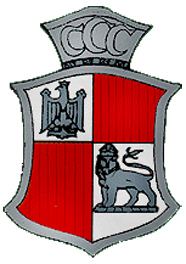Role Bomber | ||
 | ||
Active 1 July 1940 – 2 February 1947 Allegiance Polish government in exile | ||
No. 300 (Polish) "Land of Masovia" Bomber Squadron (Polish: 300 Dywizjon Bombowy "Ziemi Mazowieckiej") was a Polish World War II bomber unit. It was fighting alongside the Royal Air Force and operated from airfields in the United Kingdom.
History
Already before the outbreak of World War II, the Polish government signed an agreement with the Royal Air Force. According to the appendix to the Polish-British Alliance, should the war with Germany break out, two Polish bomber squadrons were to be created on British soil. However, following the German invasion of Poland and subsequent Soviet invasion of Poland, most of Polish airmen who managed to get to the west were incorporated into the Polish Air Forces being created in France. It was not until the fall of France that Polish airmen started to arrive to the United Kingdom in large numbers.
Polish evacuees and refuges with experience in aerial warfare were initially kept in a military camp in Eastchurch.
Finally on 1 July 1940 the No. 300 Polish Bomber Squadron was created as the first such Polish units at RAF Bramcote, as a part of the Polish Air Forces in Great Britain.
As the number of Polish airmen, often with experience in fights against the Germans from Poland and France, was high, by 24 July additional bomber squadrons were created.
Between 19 July 1940 and 8 May 1945, the crews of the squadron flew 3,891 sorties and spent 20,264 hours in air.
Initially equipped with Fairey Battle light bombers, the squadron was equipped with Vickers Wellington medium bombers on 16 November 1940. The squadron used several versions, including Mark IC, IV, III and X. In 1941 while the unit was equipped with Wellingtons and flying from Hemswell on 'Gardening' (mining) operations, the squadron's Intelligence Officer was Michael Bentine, later to become well known as an entertainer. On 5 March 1944 the unit was re-equipped with Avro Lancaster bombers and continued to use that bomber until the end of World War II (versions Mk I and Mk III).
During the war, the squadron took part in most of the notable air offensives in Europe, including attacks on Nazi Germany's Kriegsmarine preparing for Operation Seelöwe, also its naval ships such as the German battleship Gneisenau docked in Brest, France, other naval facilities in Wilhelmshaven and its U boat facilities in St. Nazaire, Millennium Offensive on large bombing raids on Cologne, bombing raids on V-weapon sites, D-Day, in support of crossing the Rhine, the Battle of the Ruhr, the bombing of Hamburg and the Battle of Berlin.
A number of the crew members were in late 1942 attached to the RAF Tempsford based No. 138 (Special) Squadron RAF as the newly formed Flight C operating Handley Page Halifax bomber.
The last mission was flown on 8 May 1945 against Adolf Hitler's residence in Berchtesgaden. The unit was disbanded on 2 January 1947, after the Allies withdrew their support for the Polish government.
